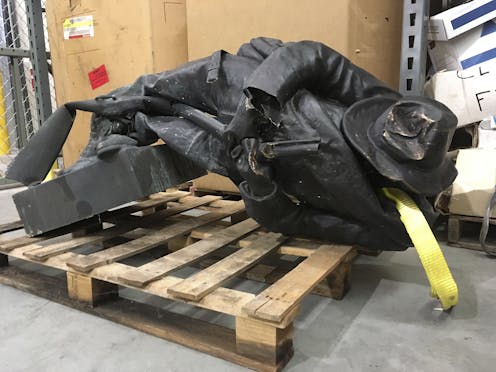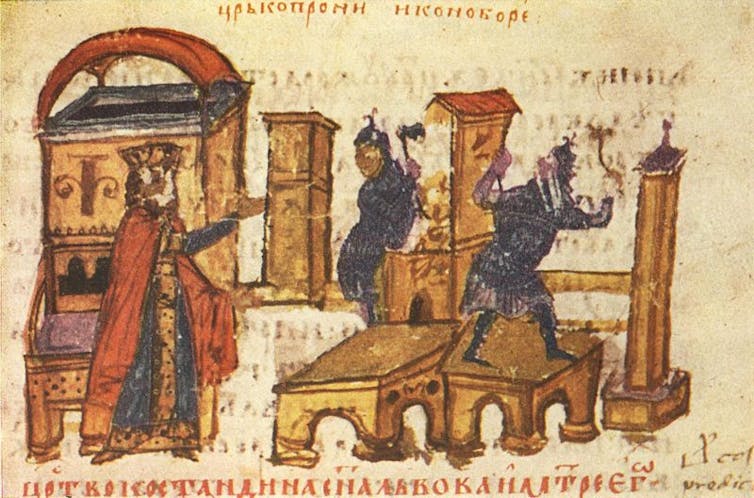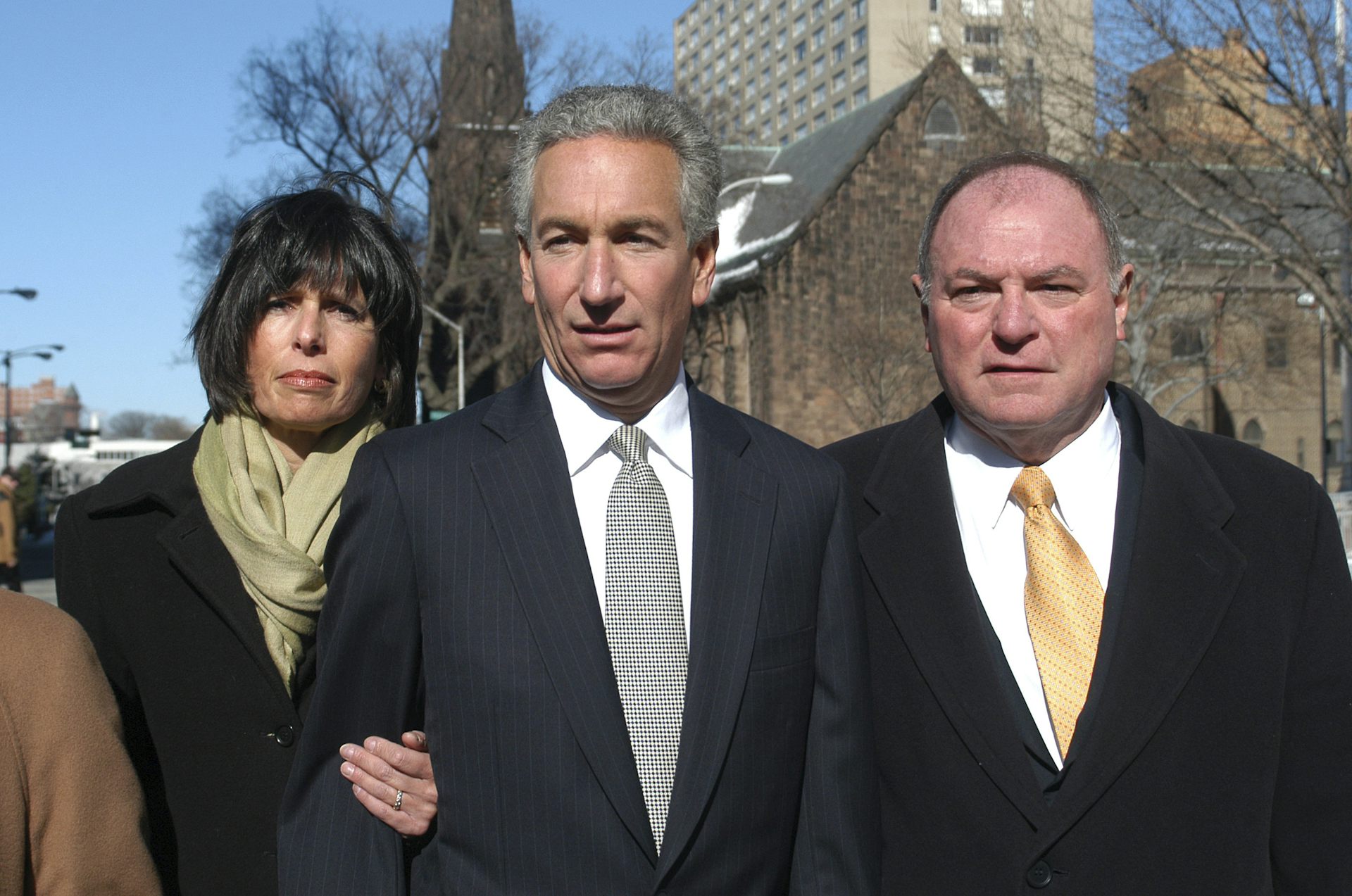What the history of iconoclasm tells us about the Confederate statue controversy
Over the course of human history, symbols and monuments have invoked violent impulses and destruction.

Over the last few months, a new American civil war seems to have broken out. It isn’t being fought with weapons. Instead, it’s being fought with statues and symbols, and at the heart of the dispute is the question of whether statues of Confederate heroes should be allowed to stand.
After a violent “Unite the Right” rally ostensibly intended to protest the removal of a statue of Robert E. Lee, an enthusiastic mob pulled down a bronze figure in North Carolina, massive Confederate statues in Baltimore were surreptitiously removed at night and New York City is formally reviewing which of its public statues should be allowed to remain in place.
The President has weighed in, along with his chief of staff, John Kelly, who said their removal would set a “very, very dangerous” precedent. It’s even become an issue in the Virginia governor’s race.
How did a bunch of statues (most of which are conventional in their appearance) become a canvas for passion, vitriol and violence? Are the defenders of the Confederate statues correct when they say their destruction or their removal sets a dangerous precedent?
To answer these questions, it’s helpful to look at the issue through the lens of history – to when the destruction of statues became a political act.
‘I will hack up the flesh’
The art of the cavemen tended to use animals as its subject; the representation of humans – aside from female fertility statues – is rare. The images of people that do exist mostly show them in animal guise or animal costume, presumably shamans. Art was religious but apparently not very political.
This changed with the advent of agriculture and the emergence of Middle Eastern city-states – empires ruled by kings who claimed support from gods and who maintained strict forms of social hierarchy. These rulers asserted their power with statues of themselves and their gods. And it was during this period in human history that iconoclasm – the destruction of images for political and religious reasons – first emerged.
If these kingdoms were overthrown, it was standard practice to subject their rulers and military leaders to horrible forms of public torture and execution: flaying them alive, cutting off of eyes, noses and other body parts and then displaying them.
“I will hack up the flesh and then carry it with me, to show off in other countries,” proclaimed Ashurbanipal, an Assyrian king who ruled from 668 to 627 B.C. (A well-known relief in the British Museum shows Ashurbanipal consuming a sumptuous meal, while the severed head of Teuman, King of Elam, hangs from a nearby tree as a marker of his power.)
Statues and memorials of rulers were subjected to similar forms of mutilation. For example, a copper statue of an Akkadian ruler from Nineveh was famously defaced, very likely when the Medes sacked Nineveh in 612 B.C. The head was severed from the body, the ears were cut off, the eyes were gouged out and the lower part of the beard was trimmed, as if an actual captive were being tortured and humiliated. (Today, its “remains” live in the National Museum of Iraq.)
In many ways, the destruction of a statue mimicked attacks on real people, and this aspect of iconoclasm surely remains central to the practice today.
In videos of the Durham, North Carolina statue of a Confederate soldier being roped around the neck and pulled from his pedestal, what’s striking is the glee of the crowd in mutilating it. Aggressive instincts were clearly at work, not unlike those present in a lynching, or that led to the dismemberment of the Akkadian effigy.
Religious iconoclasm
While such vandalism has most often been directed at images of warriors and rulers, it’s been directed toward religious images as well.
In Egypt, the Pharaoh Akhenaten created a monotheistic religion that worshiped the sun god, Aten. He ordered the destruction of all images of other gods, a practice rescinded after his death. (Most likely the edicts reflected a political struggle of some sort between Akhenaten and powerful priests.)
But perhaps the most famous instance of iconoclasm still isn’t very well-understood, since we have accounts only from the victors, written years after the fact.
During the early Christian period, the Byzantine Emperor Leo III ordered the destruction of all Christian images, on the grounds that they represented idolatry and were heretical. The policy deeply divided the empire and caused the pope in Rome to anathematize and excommunicate the emperor’s iconoclast followers. The dispute finally ended about 842 with the compromise that henceforth icons would be venerated but not worshiped in the Byzantine Empire.

What’s fascinating is that a theological debate – how to treat religious icons – also served as a focal point for political and cultural rivalries within the empire. We see echoes of this today in the Confederate statue debate, with various political and cultural factions picking sides.
Monuments to…losers?
Confederate monuments are unusual in that they celebrate not the victors of a war, but the losers.
When Confederate General Robert E. Lee surrendered in 1865, the South was in shambles. Beyond the defeat of its military, courts, law enforcement capabilities and local economies had collapsed.
In order to gloss over the extent of this disaster, the region devised a series of fictions, among them the notion that the leaders of the defeated Confederate Army were unblemished heroes, or perhaps hadn’t even been defeated in the first place. It was a way to impose some sort of order on a society that risked descending into pure anarchy – and also a sham front to all sorts of dysfunctional things (above all a nasty, codified racial hierarchy).

Confederate statues, which were erected into the mid-20th century, were an outgrowth of this attitude. What’s surprising is how many of them there are: While there doesn’t seem to be an exact count, they number well over 1,000. For more than a century they stood mute, unquestioned and largely unnoticed in thousands of public squares.
Rather abruptly, that’s changed.
A symbolic hollowness
A matter that’s intriguing to me, given the vehemence of the outcry, is that most Confederate monuments aren’t particularly interesting. As purely visual statements, they’re not very expressive. With a few exceptions, they take one of two forms – that of a standing foot soldier, or that of a colonel or general riding a horse.
For the most part, they’re indistinguishable from monuments celebrating Union soldiers; absent historical context, it would be hard to deduce that they celebrate racism – or anything, for that matter.
Their distinguishing characteristic is a sort of symbolic hollowness.
As “works of art” they’re strangely similar to Marcel Duchamp’s famous urinal, a store-bought object which became an artistic masterpiece not because an artist made it but because an artist – the eponymous R. Mutt – signed his name to it, and thereby transformed an ordinary object into a work of art. Similarly, the message attached to these Confederate statues has little to do with their visual appearance. It’s almost entirely arbitrary. The central factor in determining their meaning is the name we assign to them: Bragg, Branton and Bratley (Confederate heroes), or Banks, Burnside and Butler (who fought for the Union).
But iconoclasm tends to almost entirely ignore visual and artistic considerations. Instead, the monuments and statues are seen as assertions of political power. Mutilating a statue becomes equivalent to killing or mutilating an enemy. Both major and minor works of art are destroyed impartially.
The impulse toward destruction often seems to override normal inhibitions. Byzantine and Protestant iconoclasts, for example, destroyed images of the mother and child; in most social situations, mothers and children are people we’re urged to safeguard and protect. Symbolic meaning overrode normal social instincts.
It’s a bit scary to witness the primitive instincts – at times the raw violence – that these monuments set in motion on both sides of the issue. Clearly, they touch on social wounds that have been festering for centuries, and they’ve eliciting a divergent range of responses among historians, politicians and the public.
One would hope that the controversy can be one that will lead not just to destruction or to erasure of history, but to thoughtful reexamination and acknowledgment of the injustices and sores of the past.
Henry Adams does not work for, consult, own shares in or receive funding from any company or organisation that would benefit from this article, and has disclosed no relevant affiliations beyond their academic appointment.
Read These Next
The ‘one chatbot per child’ model for AI in classrooms conflicts with what research shows: Learning
AI tutors are often held up as an ideal, but prioritizing individualized teaching can detract from the…
Pardons are political, with modern presidents expanding their use
Trump and Biden have issued pardons at a faster clip than their predecessors. Many of their decisions…
Getting peace right: Why justice needs to be baked into ceasefire agreements – including Ukraine’s
Just war theory, a centuries-old field of ethics, deals with how and when to start conflicts. It can…






